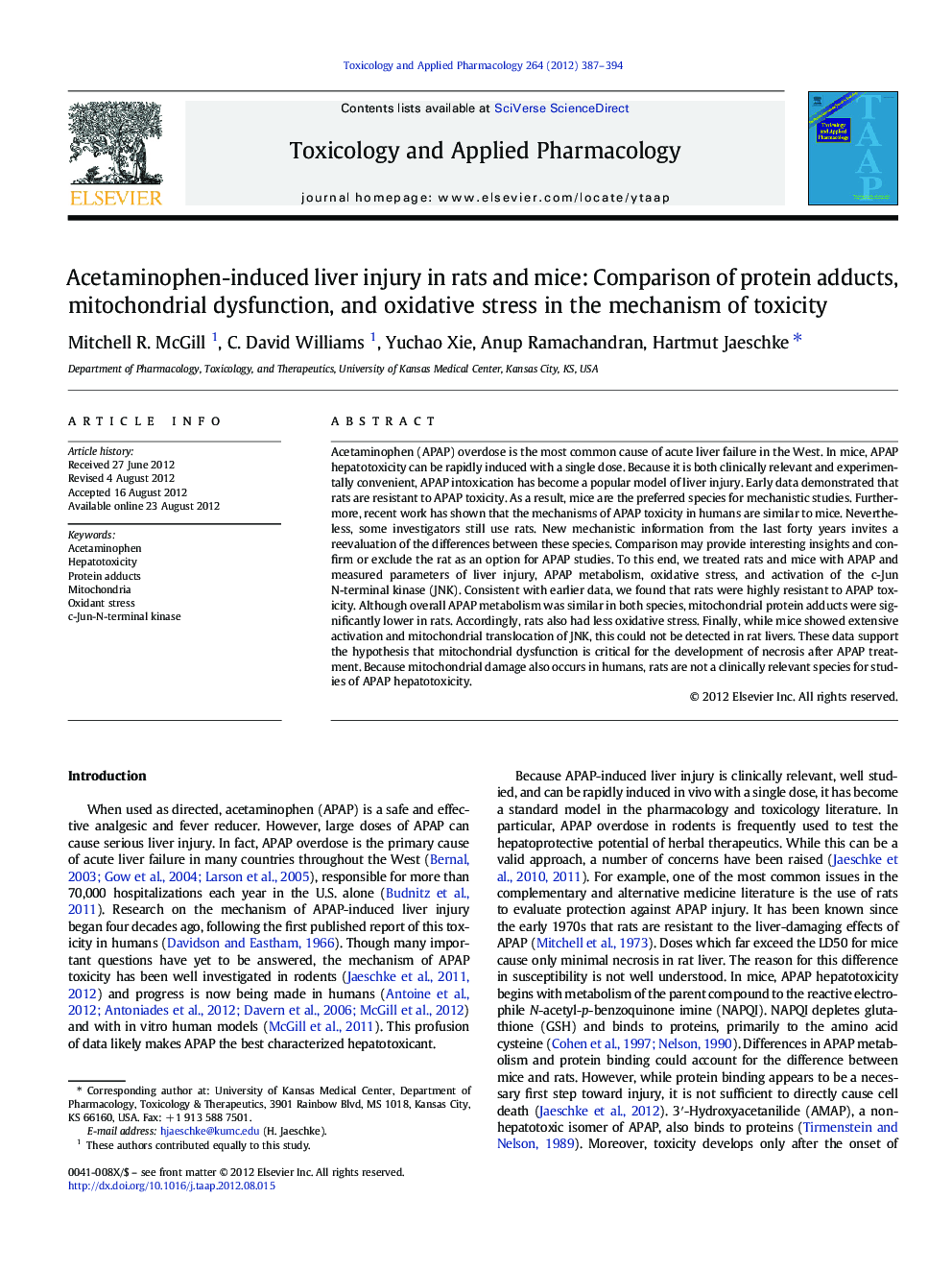| کد مقاله | کد نشریه | سال انتشار | مقاله انگلیسی | نسخه تمام متن |
|---|---|---|---|---|
| 2568884 | 1128494 | 2012 | 8 صفحه PDF | دانلود رایگان |

Acetaminophen (APAP) overdose is the most common cause of acute liver failure in the West. In mice, APAP hepatotoxicity can be rapidly induced with a single dose. Because it is both clinically relevant and experimentally convenient, APAP intoxication has become a popular model of liver injury. Early data demonstrated that rats are resistant to APAP toxicity. As a result, mice are the preferred species for mechanistic studies. Furthermore, recent work has shown that the mechanisms of APAP toxicity in humans are similar to mice. Nevertheless, some investigators still use rats. New mechanistic information from the last forty years invites a reevaluation of the differences between these species. Comparison may provide interesting insights and confirm or exclude the rat as an option for APAP studies. To this end, we treated rats and mice with APAP and measured parameters of liver injury, APAP metabolism, oxidative stress, and activation of the c-Jun N-terminal kinase (JNK). Consistent with earlier data, we found that rats were highly resistant to APAP toxicity. Although overall APAP metabolism was similar in both species, mitochondrial protein adducts were significantly lower in rats. Accordingly, rats also had less oxidative stress. Finally, while mice showed extensive activation and mitochondrial translocation of JNK, this could not be detected in rat livers. These data support the hypothesis that mitochondrial dysfunction is critical for the development of necrosis after APAP treatment. Because mitochondrial damage also occurs in humans, rats are not a clinically relevant species for studies of APAP hepatotoxicity.
Figure optionsDownload high-quality image (77 K)Download as PowerPoint slideHighlights
► Acetaminophen overdose causes severe liver injury only in mice but not in rats.
► APAP causes hepatic GSH depletion and protein adduct formation in rats and mice.
► Less protein adducts were measured in rat liver mitochondria compared to mouse.
► No oxidant stress, peroxynitrite formation or JNK activation was present in rats.
► The limited mitochondrial adducts in rats are insufficient to trigger cell necrosis.
Journal: Toxicology and Applied Pharmacology - Volume 264, Issue 3, 1 November 2012, Pages 387–394